Elgin Baylor
Elgin Baylor
The Man Who Changed
Basketball
Bijan C. Bayne
ROWMAN & LITTLEFIELD
Lanham Boulder New York London
Published by Rowman & Littlefield
A wholly owned subsidiary of The Rowman & Littlefield Publishing Group, Inc.
4501 Forbes Boulevard, Suite 200, Lanham, Maryland 20706
www.rowman.com
Unit A, Whitacre Mews, 26-34 Stannary Street, London SE11 4AB
Copyright 2015 by Rowman & Littlefield Publishers, Inc.
All rights reserved. No part of this book may be reproduced in any form or by any electronic or mechanical means, including information storage and retrieval systems, without written permission from the publisher, except by a reviewer who may quote passages in a review.
British Library Cataloguing in Publication Information Available
Library of Congress Cataloging-in-Publication Data
Bayne, Bijan C.
Elgin Baylor : the man who changed basketball / Bijan C. Bayne.
pages cm
Includes bibliographical references and index.
ISBN 978-1-4422-4570-9 (hardcover : alk. paper) ISBN 978-1-4422-4571-6 (ebook) 1. Baylor, Elgin. 2. Basketball playersUnited StatesBiography. 3. Basketball coachesUnited StatesBiography. I. Title.
GV884.B39B39 20105
796.323092dc23
[B]
2015007297
 TM The paper used in this publication meets the minimum requirements of American National Standard for Information Sciences Permanence of Paper for Printed Library Materials, ANSI/NISO Z39.48-1992.
TM The paper used in this publication meets the minimum requirements of American National Standard for Information Sciences Permanence of Paper for Printed Library Materials, ANSI/NISO Z39.48-1992.
Printed in the United States of America
Foreword
Did the people of Washington, D.C., where he played his adolescent basketball, know?
Did the people of Caldwell, Idaho, where he played for the College of Idaho, know?
Did the people of Seattle, Washington, where he played his major college basketball, know?
Did the people of Minneapolis and St. Paul, where he played his first year of professional basketball, know?
Did the people of Los Angeles, where he made his ultimate reputation, know?
At every juncture, savvy basketball fans knew that this kid, Elgin Baylor, was pretty damn good. But did they know exactly how good? Did they truly understand what they were seeing when they watched him play? Did they really understand that they were seeing the most influential individual offensive player of the last 60 years?
I would have to say that Emmett Watson had a pretty good idea.
Emmett Watson would become the great literary defender of his beloved Seattle. In his later years, you could call him the Mike Royko, Herb Caen, or Jimmy Breslin of the great Northwest. But in 1958, he was a 40-year-old sports columnist for the Seattle Post-Intelligencer, with a moonlighting assignment to write a magazine profile of a sensational basketball player at Seattle University. And in the February 1958 issue of an utterly indispensable publication, SPORT magazine, Watson introduced this young man to a national audience with one of the greatest attention-getting leads I have ever read:
If youre a rabid basketball fan, you may go right up in flames. Just a few more lines now and you will rise up out of that chair and throw this magazine clear across the room.... So, are you a red-hot basketball fan? And do you have a favorite player? Okay.
Elgin Baylor, a junior at Seattle University, is probably the best basketball player in the world today. Pro or amateur. Let that statement sink in.
All right, now that youve gone and picked up the magazine, arent you ashamed? A grown-up guy like you acting that way. And after all that SPORT has done for you! So you admire Wilt the Stilt or Bill Russell: You hadnt even seen Elgin Baylor play.
I dont know for sure how that proclamation affected anyone else in the United States, but it sure as hell made an impression clear across the country on 12-year-old basketball fanatic Bobby Ryan of 214 Ellis Avenue in Trenton, New Jersey. I became an Elgin Baylor fan without, as Mr. Watson presumed, ever having seen him play.
I also cant tell you when I first saw Elgin Baylor. I assume it was on a rare NBA national telecast (yes, there really were such things in the late 1950s). But when I did, I became a convert, a certified true believer in the Cult of Elgin.
There is no denying Hank Luisettis historical impact when he elected to shoot the basketball withgasp!one hand. Next came the jump shot, and I wont get into the ongoing debate as to who deserves full credit for that innovation. Bob Cousy certainly influenced ballhandling. Bill Russell changed the entire concept of big-man defense.
And then came Elgin Baylor.
What Elgin Baylor did was take a game that was essentially horizontal and occasionally vertical and make it diagonal. And so it remains.
Some say Jim Pollard was an uncredited forerunner of the modern game, and I am in no position to refute that assertion. But I know that Jim Pollard was, at best, Elgin Baylor on training wheels. East Coast die-hards swear that Connie Hawkins brought a certain flair to the game, and indeed he did. But his signature move was waving the ball around with one enormous hand, and with all due respect I say to Connie Hawkins and his followers: You were no Elgin Baylor.
What, therefore, did Elgin Baylor do that was so special? As you will learn in Bijan C. Baynes splendid biography of the great Elgin Baylor, the last person on earth who can explain it is Elgin Baylor himself. He just did what came natural to him on the court. Thus, we had a 6-foot, 5-inch, 225-pound athlete stutter-stepping, swooping and up-and-undering, and double-pumping and releasing shots from decidedly unfixed release points, adding up to a style of individual offense no one had ever seen before. Period.
I mean, even athletically limited, vertically challenged teenage white kids in faraway Trenton, New Jersey, were pretending they were Elgin Baylor.
Time has not been especially kind to Baylor, who retired eight years before the advent of ESPN. Few people are aware that Elgin Baylor begat Dr. J, who begat Michael, who begat LeBron, who will beget??? (it will be someone). Anyone can go to BasketballReference.com and see the resume and be suitably impressed. But nothing in the numbers or listing of accomplishmentsfor instance, 10 consecutive first team All-League selectionswill convey the essence of Elgin Baylor, who, I repeat, had more influence on how the game of basketball is played than anyone in the past 60 years.
Bijan C. Bayne has performed a magnificent and necessary service by telling the full story of a basketball innovator who lived a very full life as a coach and basketball executive after his playing days concluded and who also happens to be a very nice man.
But forgive me if I focus on those early days and how completely revolutionary Elgin Baylor was. And before anyone says, What about Oscar Robertson? understand that the vaunted Big O was the king of orthodoxy, perhaps the most fundamentally sound player ever. The Big O was the basketball equivalent of classical music.
Elgin was improvisational jazz.
Emmett Watson knew whereof he spoke.
Bob Ryan
Hingham, Massachusetts
January 2015
Acknowledgments
Those who maintain that lifes efforts are about the journeys, not the destinations, have never researched or written a book. Life is about closure and punctuation, from womb to tomb. I would not have been capable of leaving the world a biography worthy of Elgin Baylors contributions to his sport without the love, guidance, and support of my parents, Richard and Sandra Bayne. I would also thank my late maternal grandmother, Armaka Carmichael, for bequeathing me, through both genetics and reading, her fondness for wordplay. And the brief but cherished life of my brother, Javan E. Bayne, was and always is a source of inspiration. My boyhood love of the game was kindled by the giant presence of a neighbor, the late coach McKinley Armstrong.
Next page
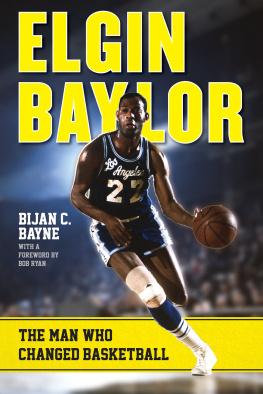

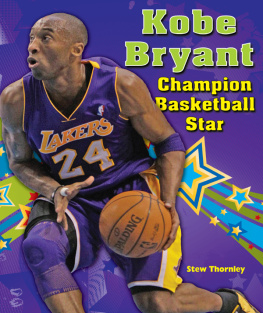


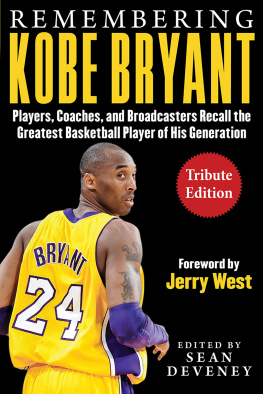
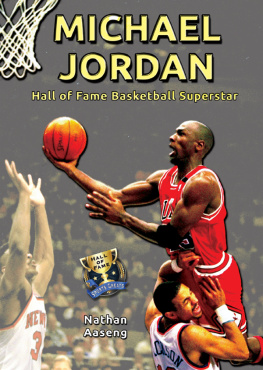
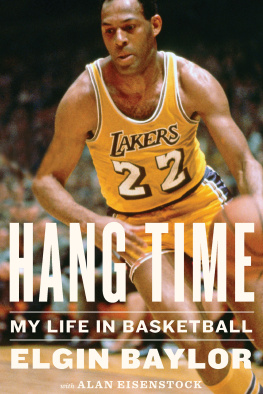
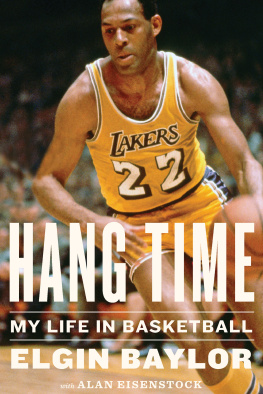
 TM The paper used in this publication meets the minimum requirements of American National Standard for Information Sciences Permanence of Paper for Printed Library Materials, ANSI/NISO Z39.48-1992.
TM The paper used in this publication meets the minimum requirements of American National Standard for Information Sciences Permanence of Paper for Printed Library Materials, ANSI/NISO Z39.48-1992.